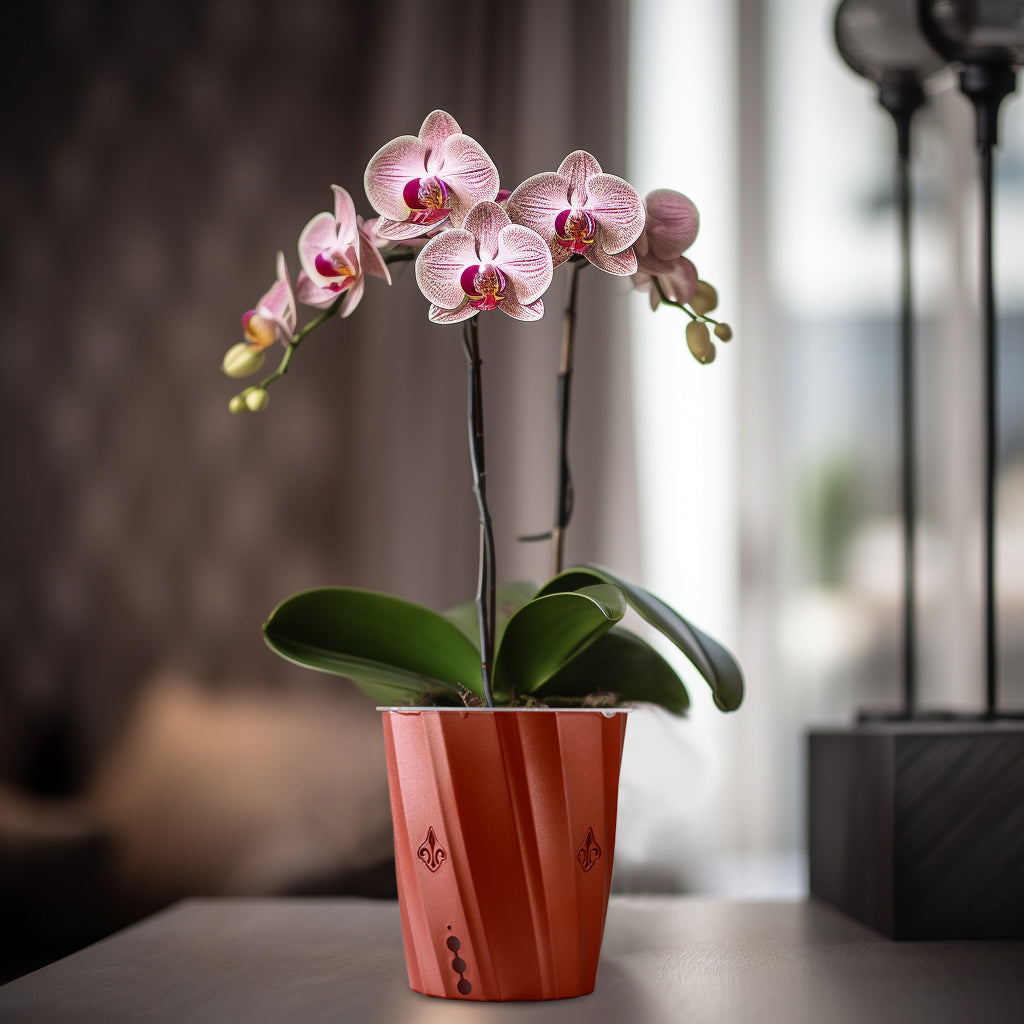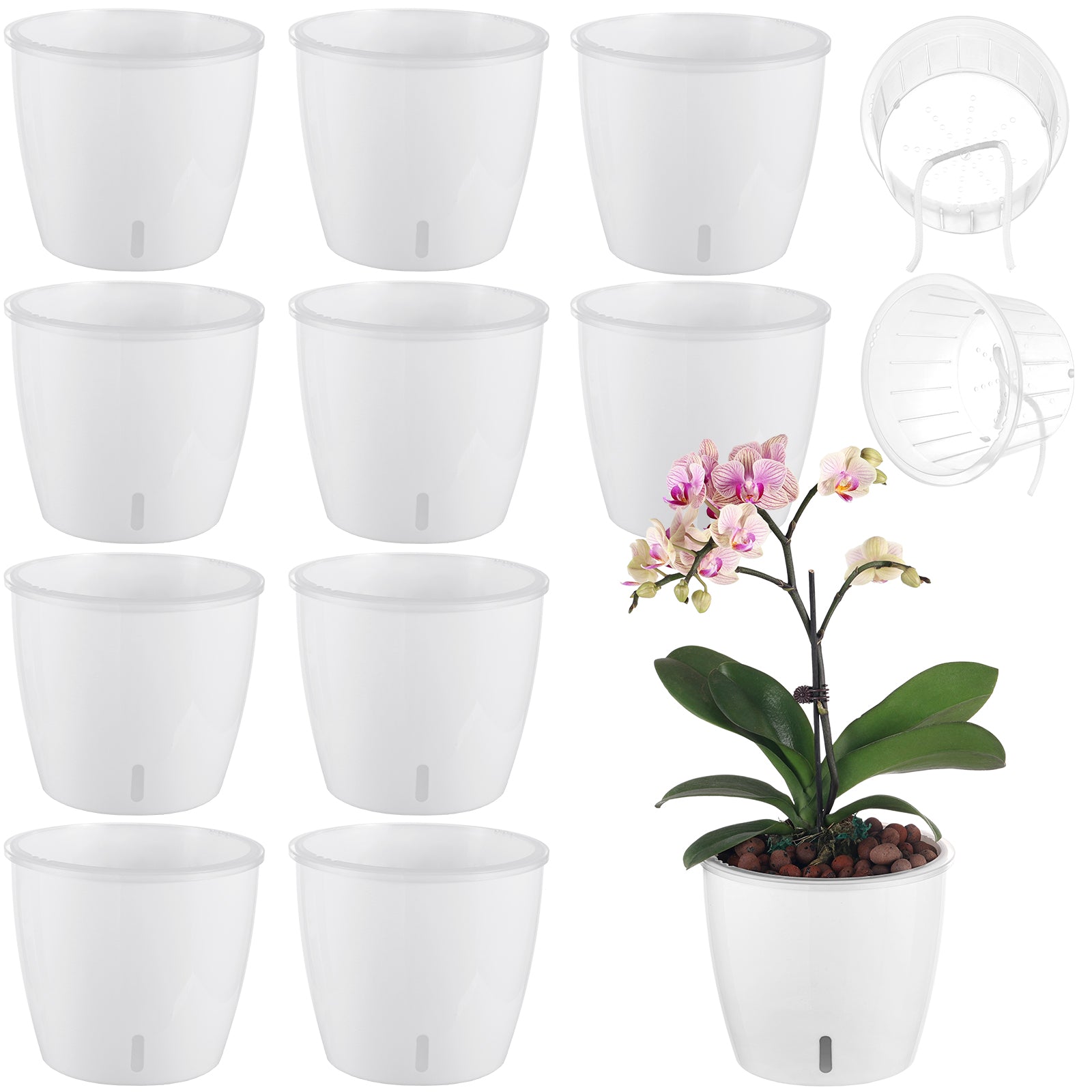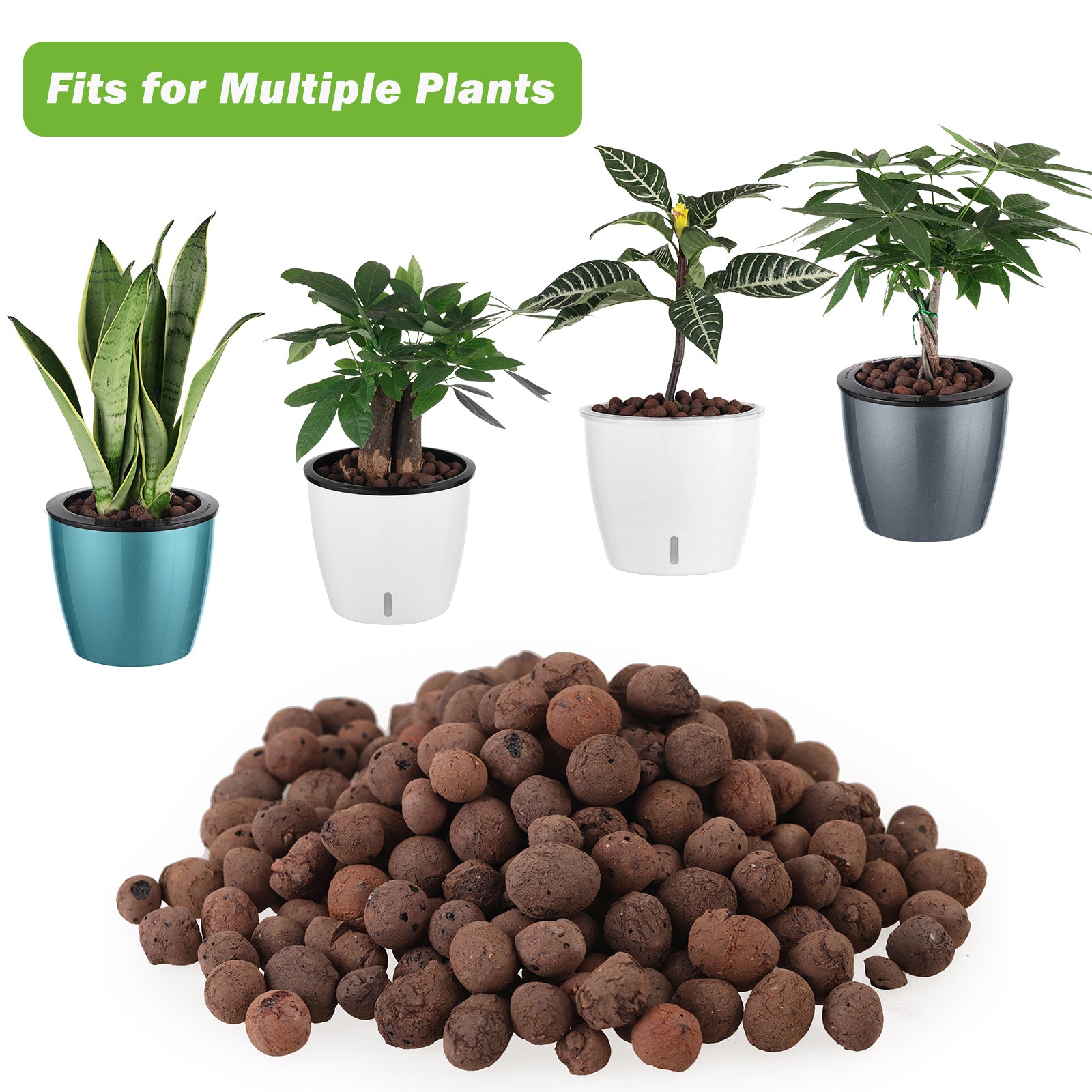How to Treat Monstera Root Rot (Prevent It from Happening Again)
Root rot is a common problem for gardeners, and it can be especially annoying for those who grow Monstera plants. If you're a fan of Monstera plants, you're probably well aware of the various problems that plague these beautiful plants.
One of the most common problems is root rot, which many different factors can cause. Monstera root rot is caused by a fungus that infects the plant's roots and prevents it from taking up water and nutrients from the soil.
If you think your Monstera plant may be suffering from root rot, the first thing you should do is inspect the roots. If they are brown or black and mushy, your plant likely has root rot.
Once you've confirmed that your plant has root rot, you need to take immediate action to save it. In this post, we will explain how to treat monstera root rot and prevent it from happening again.
Self-watering planters can help to prevent root rot in Monstera plants. Monstera are tropical plants that prefer moist soil, but they are also susceptible to overwatering. Overwatering can lead to root rot, which can kill the plant.
Keep reading to learn about how to treat and prevent monstera root rot.
How to Treat Monstera Root Rot Step by Step Guide
Check The Roots
First step is to check the roots for symptoms of root rot if you found that roots are mush brown and black then it is effected with root rot.

Wash the roots
After removing the mushy and brown parts of the roots, wash the roots with dishwasher liquid and let them dry for 24 hours. In this way, we can be sure that the fungus and bacteria are completely dead before we replant the plant.

Use Hydrogen Peroxide:
Hydrogen peroxide can be used to treat root rot because it gives the plants a boost of nutrients.

Use Peat Moss Or Self watering Planter:
To prevent root rot in monstera plants again, use peat moss. Self watering planter is also a great way to avoid root rot in monstera. Read more about soils for Monstera.
Causes of Root Rot in Monstera Deliciosa
Monstera plants are susceptible to root rot, which can kill the plant if left untreated. Root rot is caused by a fungus that attacks the plant's roots, causing them to decompose. There are a few possible causes of monstera root rot, which include:
- Overwatering (soggy soil, waterlogged roots)
- Unsuitable Container.
- An unsuitable Soil Mix.
- Poor drainage.
- Insufficient lighting.
- Temperature
- Too much fertilizer.
Let's discuss each factor in detail one by one.
Overwatering
Monstera roots are susceptible to root rot if they are overwatered. Root rot is a condition that can lead to the death of the plant. It is caused by a fungus that thrives in wet conditions.
When you overwater Monstera plants, water enters the small pockets of air in their soil, replacing the tiny air pockets with water. We all know that air circulation is one of the most important factors in maintaining a healthy plant.
A Planterhoma self-watering pot with air holes allows roots to get enough air so they won't grow fungus or bacteria.
It is a rule of thumb that your Monstera roots will have no air circulation if your Monstera roots do not have air pockets. You will notice a weakening and choking of the Monsteras roots.
Anaerobic growth occurs when there is not enough oxygen in the soil. Bacteria, fungi, and other types of soil infections result from this negative growth.
The same thing happens when you overwater. Pathogens become attracted to water, which attacks your roots and even spreads the infection to your leaves.
Poor Drainage System
Monstera plants are susceptible to root rot due to poor drainage. Monstera plants require moist soil and good drainage to thrive. If Monstera roots are allowed to sit in water, they will quickly develop root rot, which can kill the plant.
To prevent root rot, ensure your Monstera's pot has drainage holes and that you only water the plant when the soil is dry. If you think your plant has root rot, try replanting it in fresh, well-draining soil.
Unsuitable Container
To prevent monstera root rot, choose the right container for your plant. A variety of factors cause root rot, but the most common is due to the plant being rootbound.
Monstera roots need room to spread out, and when confined to a small space, they begin to rot. Oversized pots, on the other hand, are more likely to suffer from root rot due to their size.
Drying water in a large container takes longer than in a smaller container. A more extended period of soggy soil at the bottom-most part of the pot will eventually cause root rot to occur as well.
An Unsuitable Soil Mix
You can grow a healthy plant if you provide Monstera with a healthy and suitable foundation on which to grow. It is very important to ensure that the soil you use for your plants is the correct type.
The cause of root rot is typically improper soil mix, which can lead to soggy conditions that encourage fungal growth. You can take proper care of your monstera plant and follow few simple steps you can prevent root rot from happening.
Make sure you are using a well-draining potting mix. A good mix will contain a mix of organic matter and inorganic matter, such as perlite or vermiculite. You can add some organic matter to your soil mix to improve drainage.
If you're looking for a great way to support your Monstera plant as it grows, LECA balls are the perfect solution. Made from lightweight expanded clay, these balls can help provide drainage and aeration while also supporting your plant's roots. LECA balls are great for Monstera growth.
Insufficient Lighting.
For a Monstera plant to thrive, it is recommended to receive at least 5-8 hours of bright, diffused light per day. Monstera plants are typically known for their resistance to root rot. But proper lighting is necessary for Monstera.
However, they may be susceptible to this condition if they do not receive adequate sunlight. Root rot is a common problem for people who don't give their Monstera plants adequate sunlight.
Without enough sunlight, the plant's roots can't photosynthesize properly, leading to a build-up of water in the soil and a lack of oxygen. This can cause the roots to rot, eventually killing the plant.
If you think your Monstera isn't getting enough sunlight, try moving it to a brighter location. If possible, place it near a south- or west-facing window. If you can't provide adequate sunlight, consider using grow lights.
Temperature.
Monstera deliciosa root rot is a common problem that can occur if the roots of a Monstera are exposed to temperatures that are too cold or too hot. If the roots are exposed to too cold temperatures, they will become brittle and break easily.
If the roots are exposed to too hot temperatures, they will begin to rot. Either way, this can lead to serious problems for the plant. A temperature between 60- and 80-degrees Fahrenheit is ideal for growing Monstera plants. If the temperature drops below 50°F, causing root rot.
Symptoms of Root Rot in Monstera Plant
Root rots are a serious problem for Monstera plants. They can cause the plant to wilt, turn yellow, and eventually die. There are several types of root rots, each with its symptoms. Here are some of the most common signs of root rot in Monstera plants:
- Yellow and pale leaves.
- Stagnant growth.
- Brown and mushy roots.
- Black spots.
- Wilted leaves.
- Thinning of the stems.
If you see any of these symptoms in your Monstera plant, it's important to take action immediately. Root rot can spread quickly and kill the entire plant if left untreated.
Yellow and Pale Leaves.
There are several symptoms of stagnant growth in Monstera plants. These include small and irregular leaves, reduced flowering, and reduced fruit production.
These symptoms may indicate that your plants have root rot. It is common for yellow and pale leaves to be caused by overwatering and root rot.
Brown and Mushy Roots.
The brown and mushy roots of Monstera plants are a common problem for plant owners. This condition has several possible causes, including over-watering, poor drainage, and root rot.
First, check the roots to see if they are soft and mushy. If they are mushy, the plant is likely suffering from root rot, and you must replant the Monstera in a new, sterile potting mix. Be sure to water the plant carefully.
Stagnant Growth.
Monstera is sturdy plants and doesn't get easily infected. Typically, when a Monstera plant experiences stagnant growth, it is caused by root rot. If you have a Monstera experiencing stagnant growth, the first step is to check the roots for signs of root rot.
If you see any, you will need to take measures to correct the problem, such as repotting the Monstera in new soil or removing the affected roots. There are a few different ways to treat root rot, but the most important thing is to address the underlying issue.
Black Spots.
A black spot on the leaves of the plant may indicate that there is root rot on the plant. Bacteria and pathogens usually take over your Monstera, putting its life at risk.
Root rot is a common problem in Monstera and can be caused by several fungi. These fungi thrive in wet and humid conditions, so keeping your Monstera roots as dry as possible is important.
If you think your Monstera has root rot, the first thing you should do is remove any affected leaves. If the root rot is severe, you must repot your Monstera in fresh, clean soil.
Wilted Leaves.
Wilted leaves on a Monstera plant are often caused by root rot. Root rot monstera is a condition that several different fungi attack the roots of the plant, causing them to rot. This can lead to various problems, including wilting leaves, stunted growth, and eventually death.
Thinning of the Stems.
Monstera (Monstera deliciosa) is known for its large, glossy leaves. Root rot is the most common cause of thinning stems in Monstera.
Root rot is caused by a build-up of water in the soil, leading to the plant's roots becoming waterlogged and rotting. Once the roots have rotted, the plant can no longer take up water and nutrients from the soil, causing the monstera stem rot to become thin and weak.
Water your Monstera only when the soil is dry to prevent root rot. Allow the water to drain completely from the pot after watering.
How to Prevent Root Rot in Monstera Deliciosa
Root rot is one of the most serious problems you can have for your plants. It can even cause their death. However, you can do some things to prevent it from happening in the first place.
Proper Drainage.
The first step to preventing root rot is ensuring that your plant is in well-drained soil. If the soil is too wet, the roots will start to rot. You can also take steps to improve the drainage of your plant's soil by adding organic matter or using a raised bed.
Avoid Overwatering.
Second, avoid overwatering your plants. Water them only when the soil is dry to the touch. To check if your soil is dry enough, check the top two inches of the soil to see if it is dry enough.
If you notice any signs of root rot, such as yellowing leaves or wilting, immediately remove the affected plant and replant it in fresh, dry soil.
Make Sure Your Soil is Right.
There is no doubt that monstera plants thrive in well-draining, moisture-retaining soil. Your Monstera soil mix can be perfect by adding organic matter such as moss, coco coir, or other organic matter. Moss is a great soil to prevent root rot in Monstera.

How To Make Your Homemade Fertilizer for Indoor Plants
Before Reusing Pots, Sterilize Them.
You will need to disinfect the pots if you have a fungal problem, as vinegar or alcohol or hydrogen peroxide will kill all the bacteria in the pots if you have a fungal problem.
Ensure all the harmful bacteria have been destroyed by letting it dry in the sun for at least a few hours. Neem oil can be added to your soil to provide an extra layer of protection.
Self Watering Planter
By using self watering planter you can easily avoid root rot in monstera plant. It has special air holes to avoid root rot in plants. By self watering system you can also avoid overwatering and drainage problem.
Final Words
Monstera root rot can be treated by removing the affected roots, changing the soil, and increasing air circulation; preventive measures are just as important. Proper soil, adequate water, the right moisture, humidity, light, nutrition, and gradual fertilizer.
And giving the plant enough time to dry out between waterings can help stop Monstera root rot from happening again. You can keep your plants healthy and happy with a little extra attention and care.
FAQs
Can Monstera Recover from Root Rot?
When the Monstera plant is healthy enough, it can recover from root rot within a short period of time. There is a possibility that the plant may die if it is not healthy enough.
Can Overwatering Once Cause Root Rot?
Most people know that overwatering can cause root rot, but they don't know why. Root rot is caused by too much moisture in the soil, so when you water your plant too much, the plant can't keep up with the excess moisture and ends up rotting from within.
How Long Does It Take a Monstera Plant to Recover from Root Rot?
Root rot is a condition that can damage or kill a plant. Depending on the severity of the damage, it can take a plant a long time to recover from root rot. Plants usually grow back between 7-14 days if they're cared for properly.
Read About Root Rot in Other Plants:
Jade Plant Root Rot: Causes, Symptoms, and Solutions
Snake Plant Root Rot: How To Fix It Step By Step Guide
Peace Lily Root Rot: Symptoms, Causes and Treatment
Split Leaf Philodendron Care - Everything You Need to Know
How to Propagating Monstera Plant: A Step-By-Step Guide
Watering Monstera Deliciosa | How Often to Water Monstera?
Brown Spots On Monstera Leaves
How to Grow and Care for Calathea Plant
*Disclosure: This post may contain affiliate links. As an Amazon Associate I earn from qualifying purchases.

















Leave a comment